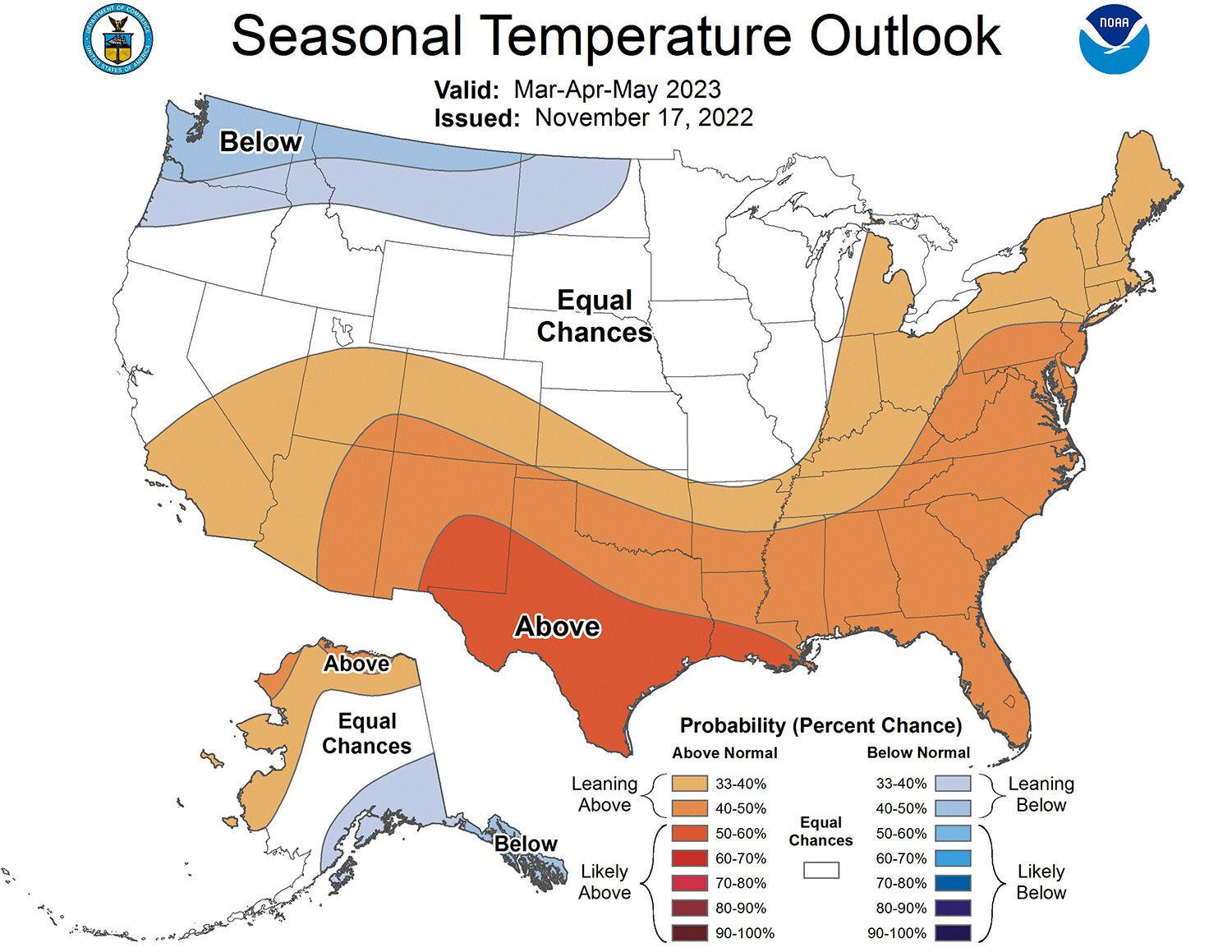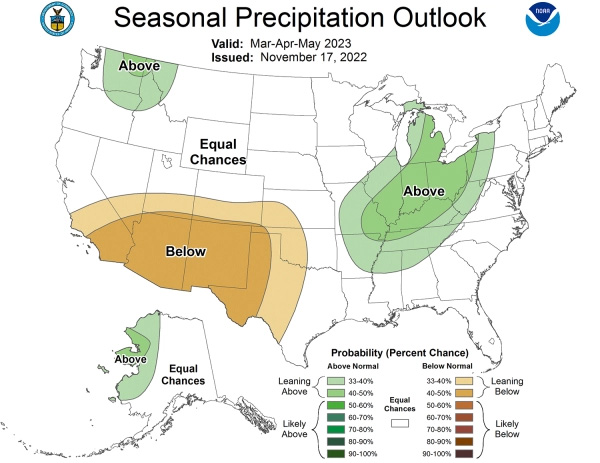WHAT YOU NEED TO KNOW ABOUT SPRING 2023 WEATHER TRENDS
#Plant23 is approaching – and now is the time to take a look at the weather forecast to see what kind of challenges might be on their way.
To ensure the best start for your crop, pay special attention to patterns from late March into June.
WINTER’S START
Across most of the country, December brought cool temperatures heading into the holiday season. It was a quite active beginning to winter, with multiple storm systems bringing cumulative snowfall to the Upper Midwest and Northern Plains.
However, those systems haven’t stuck around into the beginning of the year. In most regions, January temperatures have been higher than expected. Drought-plagued western states have also experienced a wetter than normal start to winter.
But don’t be fooled by Mother Nature’s generosity: another polar vortex is headed our way before winter’s end.
TEMPERATURE OUTLOOK:
 Accurate temperature outlooks are
a bit harder to predict than precipitation and other weather trends. Variability will be the name of the game heading into both the planting and growing seasons.
Accurate temperature outlooks are
a bit harder to predict than precipitation and other weather trends. Variability will be the name of the game heading into both the planting and growing seasons.
It’s important to look at the expected low temperatures for April, to prevent your seedlings from injury or death because of freezing.
The goal is to ensure soil temperatures are above 50° F, as that is the minimum at which seedling germination happens. Anything below 50 will cause seed to sit dormant, increasing susceptibility to disease and insect damage.
Plan to test the soil temperature at least one week ahead of your ideal planting date. Before planting, check the forecast for the next 10 days. If it’s showing temperatures under 50° F, you’ll be forcing your corn seedlings to germinate in temperature stress. This can negatively impact your crop’s uniformity and plant population.
Coming into March, April, and May, predictions show the Southern, Eastern, and even Midwest regions will be leaning towards above-average temperatures. That warmer weather allows seedlings to remain healthy when planted early.
Be careful out west, though (especially the Pacific Northwest region): temperature forecasts are below average for the spring season.
PRECIPITATION OUTLOOK:
 Now that we know what to expect for temperatures coming into spring, let’s look at the
chance of precipitation.
Now that we know what to expect for temperatures coming into spring, let’s look at the
chance of precipitation.
Farmers located in the Midwest and Mid-South portions of the country will likely experience above-average precipitation in the next two to three months, and potentially into the spring. This wet spell could even delay the start of the planting season, despite the warmer soil temperatures.
Unfortunately, further south (especially the Southwest regions), it’s likely we’ll see below-average precipitation. This won’t provide much relief for the long-standing drought-like conditions in those regions.
IS DROUGHT A CONCERN?
 The short answer: yes.
The short answer: yes.
Most regions across the country will once again experience drought in some shape or form.
On the bright side, areas like the Midwest should have more rainfall, and will likely trend towards drought removal. Overall, spring weather predictions look favorable for much of the Corn Belt.
Meanwhile, Western regions may be trending towards higher precipitation levels – but it likely won’t be enough to break the drought cycle.
For regions experiencing persistent drought conditions, make sure your crop is drought-ready by reducing planting populations and using strategies to conserve moisture.
Every planting season brings its own environmental challenges. Stay up-to-date on weather trends, so you can start creating your field plans for spring. Before April, look towards the AdvantageAcre® tool for a full 11-month weather forecast to make more proactive decisions. And as always, be sure to reach out to your AgriGold agronomist with any questions.



